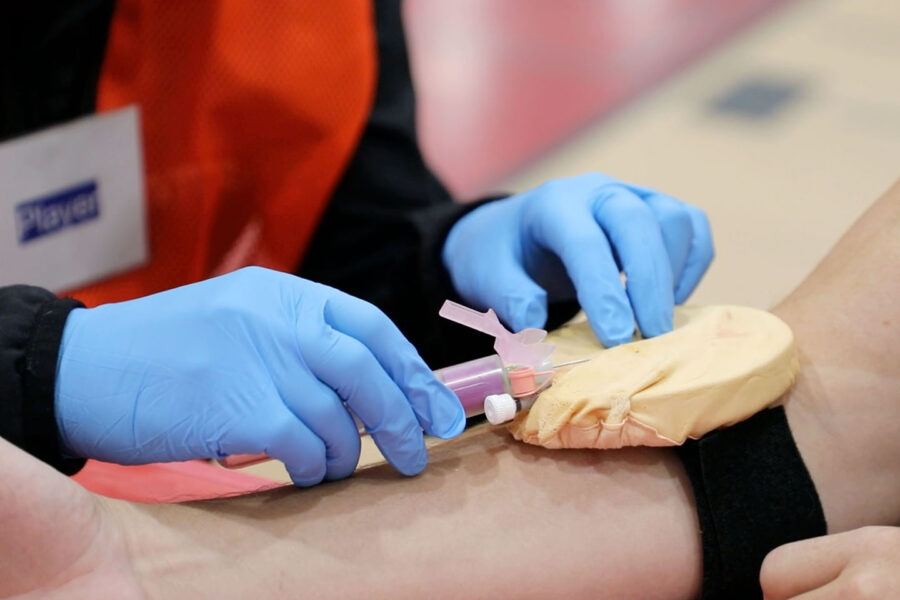Practice makes perfect. And when you are responding to an emergency – such as the detonation of a dirty bomb that may have left a large group of people exposed to radiation – practice can save lives.
That’s why the UNMC College of Public Health and the Nebraska Public Health Laboratory held an exercise last week to simulate the type of organized specimen collection that would be necessary, following a radiological event such as a dirty bomb, to determine who had been exposed to radiation.
Leaders from the college’s Center for Biosecurity, Biopreparedness and Emerging Infectious Diseases and NPHL, as well as nursing staff from the ambulatory surgery centers of Omaha, took part in the event.
“The great thing about this type of collaborative exercise is that we learn what to fix,” said Keith Hansen, co-director of the center and exercise facilitator. “Nothing starts off flawlessly, and we’re identifying flaws that can be repaired.”
Officials from the Nebraska Department of Health and Human Services and the Douglas County Department of Health also were on hand as health and testing professionals simulated the type of collaborative, multi-organizational team that would be called to provide testing services in a real-world radiological event.
The public health laboratory and Omaha’s ambulatory surgery centers have collaborated on such mock emergency events since 2015.
“NPHL has always realized the need for more detailed plans in mass specimen collection in the community,” said Karen Stiles, the laboratory’s state training coordinator. “It was the SARS-CoV-2 pandemic that made us realize the need to have plans in place for collection of more than just nasopharyngeal swabs. The ambulatory surgery centers stepped up to provide the nursing capacity to draw blood and collect urine.”
Volunteers, including UNMC public health students, played the part of people coming through a testing center. Some of the volunteers played roles, such as difficult or frightened patients, to further authenticate the exercise.
Anthony Sambol, assistant director at the public health laboratory, who played a patient during the exercise, said he threw a few curve balls at the testing team and was pleased with how they responded.
“I gave some people a hard time as I went through, and they answered very well, making the appropriate changes if needed,” Sambol said.
“The same principles we’re using today would apply in a real event,” he said. “The same areas would be needed – a place to collect urine samples, to collect blood samples. It might be set up differently depending upon the location and number of people who need to be tested, but the actions and steps are the same.”
The public health laboratory and the ambulatory surgery centers meet monthly to discuss emergency planning, not only for specimen collection, but other emergencies as well, Stiles said. “We couldn’t do this without their assistance.”
Hansen said he was pleased to see UNMC public health students volunteering at the event.
“They will be designing the clinics of the future, so it’s great to have them here.”
